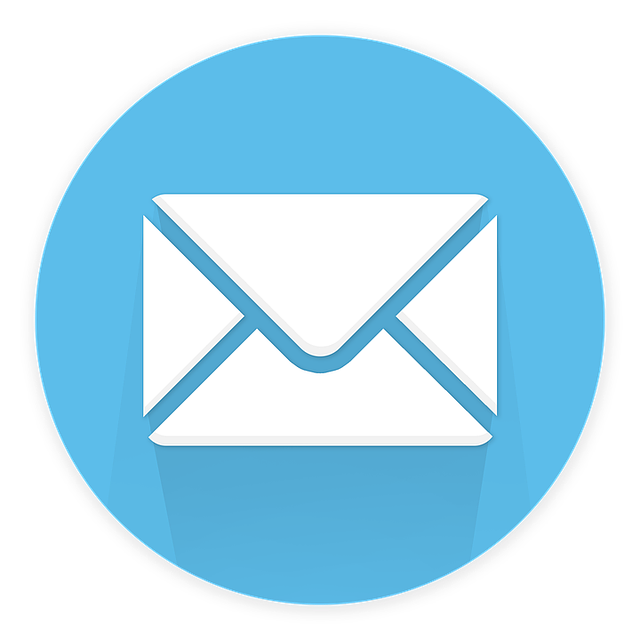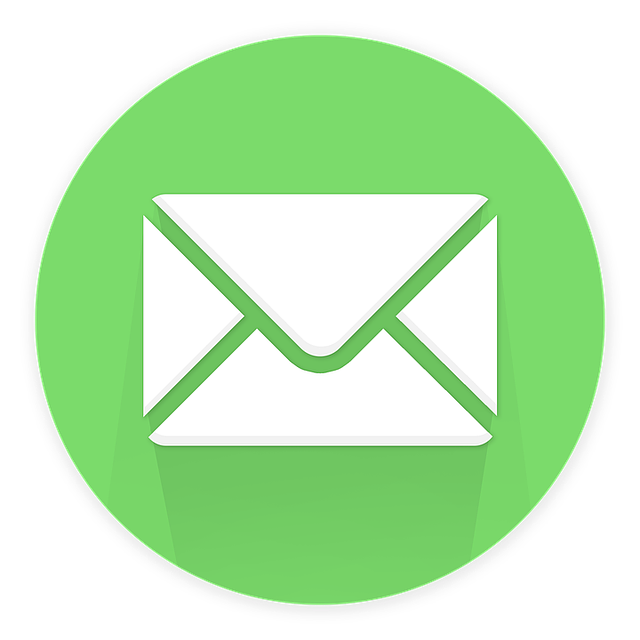Do you want to take your real estate business to the next level? Email marketing is a powerful tool that can help you reach more potential clients and close more deals. But in order to succeed, you need to know the dos and don’ts of email marketing for real estate agents.
In this article, we will explore the key strategies and tactics that will make your email marketing campaigns effective and successful. We will start by discussing the importance of building an email list and how to do it the right way.
Then, we will dive into the art of crafting compelling email content that grabs the attention of your recipients and drives them to take action.
Next, we will explore the regulations that govern email marketing and how to ensure compliance. We will also cover the benefits of automating your email campaigns and how to set up a system that runs smoothly.
Finally, we will discuss the importance of tracking and analyzing email metrics to optimize your campaigns and avoid common mistakes.
So, if you’re ready to supercharge your real estate business through email marketing, let’s dive in!
Key Takeaways
- Building an email list and regularly cleaning it is crucial for successful email marketing in real estate.
- Personalization techniques, such as addressing recipients by their first name, increase engagement and conversion rates.
- Optimizing subject lines with action-oriented language and creating a sense of urgency improves open and click-through rates.
- Monitoring email campaign metrics, such as open and click-through rates, helps optimize email strategies and avoid common mistakes.
Building an Email List
Want to know the key to success in email marketing for real estate agents? It’s all about building an email list that will skyrocket your business!
The first step is targeted segmentation. Instead of sending generic emails to everyone on your list, segment your audience based on their preferences, demographics, and behavior. This way, you can create personalized and relevant content that resonates with each individual.
But building a strong email list is not enough; you also need to maintain it. Regularly clean your list by removing inactive or bounced email addresses. This will ensure that your messages reach the right people and improve your deliverability rates.
Now that you have a targeted and well-maintained email list, let’s move on to the next section: crafting compelling email content that will captivate your audience and drive conversions.
Crafting Compelling Email Content
Crafting compelling email content is essential for capturing your audience’s attention and driving them to take action. To create engaging emails, you need to use personalization techniques that make your content feel tailored to each recipient. Start by addressing your audience by their first name and segment your email list based on their preferences or previous interactions. This will increase the likelihood of them engaging with your content. Additionally, optimize your subject lines to grab attention and create a sense of urgency. Use action-oriented language and include numbers or intriguing statements to entice readers to open your emails. Remember to keep your content concise, visually appealing, and easy to read. Incorporating a 3 column and 5 row table can also help break up the text and make it more visually appealing. By personalizing your content and optimizing your subject lines, you can increase open and click-through rates. Now, let’s move on to the next section about complying with email marketing regulations.
Complying with Email Marketing Regulations
When it comes to email marketing, it’s essential to familiarize yourself with the CAN-SPAM Act, so you can stay compliant with the regulations.
Make sure to obtain consent from your recipients before sending any marketing emails to ensure you’re respecting their privacy and preferences.
And don’t forget to provide clear and easy-to-find unsubscribe options in every email, giving your recipients the freedom to opt out if they no longer wish to receive your communications.
By following these key points, you’ll not only comply with email marketing regulations, but also build trust and maintain a positive reputation with your audience.
Familiarize yourself with CAN-SPAM Act
Before diving into the world of email marketing as a real estate agent, it is crucial to familiarize yourself with the CAN-SPAM Act – a set of rules and regulations that govern the sending of commercial emails. Understanding email deliverability and creating effective subject lines are key aspects of successful email marketing campaigns. To grab the attention of your audience, here is a helpful table outlining important points to keep in mind:
| Rule | Description | Impact |
|---|---|---|
| Don’t use false or misleading header information | Be honest and transparent in your email headers | Builds trust and credibility |
| Include a clear and conspicuous unsubscribe link | Make it easy for recipients to opt out of your emails | Improves user experience |
| Honor opt-out requests promptly | Unsubscribe requests must be processed within 10 business days | Avoid legal consequences |
By following these guidelines, you can ensure compliance with the CAN-SPAM Act and build a solid foundation for your email marketing strategy. Remember, obtaining consent before sending marketing emails is the next crucial step to consider.
Obtain consent before sending marketing emails
To establish trust and comply with legal requirements, you should ensure that you’ve obtained consent from recipients before sending any marketing emails. Email marketing best practices dictate that you should only send emails to individuals who’ve given explicit permission to receive them. Effective email segmentation is key to obtaining this consent.
Here are three ways to obtain consent and build a strong email list:
-
Use opt-in forms on your website: Place opt-in forms strategically on your website to encourage visitors to subscribe to your email list. Offer incentives such as exclusive property updates or valuable real estate tips to entice them to sign up.
-
Leverage social media: Promote your email list on social media platforms to reach a wider audience. Encourage followers to subscribe by highlighting the benefits they’ll receive by joining your email community.
-
Host webinars or events: Organize webinars or events where participants can learn valuable real estate insights. Ask for their email addresses during registration, ensuring that they’re interested in receiving future communications from you.
By obtaining consent through these methods, you can build a targeted email list that’s more likely to engage with your marketing efforts. This will lead to higher open rates, click-through rates, and ultimately, more successful real estate transactions.
Now, let’s move on to the next crucial step: providing clear unsubscribe options.
Provide clear unsubscribe options
Make it easy for your audience to unsubscribe from your emails and respect their decision to opt out. Providing a clear and visible unsubscribe option not only helps you comply with email marketing regulations, but it also improves deliverability and builds trust with your audience.
When someone no longer wants to receive your emails, it’s important to make the process hassle-free. Include an unsubscribe link in every email, preferably at the bottom where it’s easy to find. Additionally, ensure that the unsubscribe process is straightforward and doesn’t require multiple steps or personal information. By doing this, you show that you value your audience’s preferences and privacy.
Plus, it allows you to focus your efforts on those who genuinely want to receive your emails. Speaking of which, let’s explore how automating your email campaigns can further enhance your marketing strategy.
Automating Your Email Campaigns
When automating your email campaigns, it’s important to remember that 80% of real estate professionals say that email marketing increases their business’ retention. By automating email sequences, you can save time and still deliver personalized content to your clients. With automated emails, you can set up a series of messages that are triggered based on specific actions or time intervals. This allows you to provide timely information and stay top-of-mind with your clients without manually sending each email.
To evoke emotion in your audience, consider incorporating a table like the one below:
| Benefit | Emotion | Example |
|---|---|---|
| Time savings | Convenience | "Spend more time with your clients, not your inbox" |
| Personalization | Connection | "We know what you’re looking for in a home" |
| Increased engagement | Excitement | "Get exclusive access to hot new listings" |
By automating your email campaigns and incorporating personalized content, you can create a more engaging and efficient marketing strategy. In the next section, we’ll discuss the importance of tracking and analyzing email metrics.
Tracking and Analyzing Email Metrics
When it comes to tracking and analyzing email metrics, you need to monitor open and click-through rates to gauge the effectiveness of your campaigns.
By measuring conversion and engagement metrics, you can identify which emails are driving the most results and tailor your content accordingly.
Don’t forget to use A/B testing to optimize your campaigns and find out what resonates best with your audience.
Monitor open and click-through rates
To effectively monitor open and click-through rates, it’s crucial for real estate agents to embrace data-driven insights and adapt their email marketing strategies accordingly. By analyzing these metrics, agents can gain valuable insights into the effectiveness of their email campaigns and make informed decisions to optimize their marketing efforts. One way to improve open rates is by implementing email segmentation, tailoring messages to specific target audiences. Additionally, crafting compelling subject lines that grab attention and entice recipients to open the email can significantly impact open rates. Similarly, monitoring click-through rates allows agents to gauge the level of engagement and interest in their emails. By analyzing which links are being clicked and which are being ignored, agents can refine their content and call-to-action strategies to drive more conversions. Moving forward, measuring conversion and engagement metrics will provide further insights into the effectiveness of email marketing strategies.
Measure conversion and engagement metrics
You can gauge the effectiveness of your email campaigns by measuring conversion and engagement metrics. This allows you to optimize your outreach efforts and achieve astounding results.
Conversion tracking is crucial in determining how many recipients took the desired action after receiving your email. This could be signing up for a newsletter, scheduling a consultation, or making a purchase. By analyzing conversion rates, you can identify areas where your email content or call-to-action can be improved to drive more conversions.
Additionally, engagement analysis helps you understand how recipients interact with your emails. This includes the time spent reading, the number of clicks on links, and the overall engagement level. This data can guide you in crafting more engaging and relevant content for your audience.
Transitioning into the subsequent section, A/B testing can further enhance your email marketing strategy.
Use A/B testing to optimize your campaigns
Maximize the impact of your campaigns by utilizing A/B testing to fine-tune and optimize your email marketing strategy.
A/B testing strategies involve creating two versions of an email, each with a slight variation, and sending them to different segments of your audience. By analyzing the results, you can gather valuable insights on what resonates best with your subscribers. This data-driven decision-making approach allows you to make informed adjustments and improvements to your campaigns.
Test different subject lines, calls to action, layout designs, or even the timing of your emails to see which elements drive higher engagement and conversions. With A/B testing, you can uncover the most effective strategies to connect with your audience and drive results.
Transitioning into the next section, let’s now explore the common email marketing mistakes to avoid, ensuring your campaigns are optimized for success.
Avoiding Common Email Marketing Mistakes
Ironically, even though email marketing is meant to save time, many real estate agents end up wasting hours by making avoidable mistakes. One common mistake is not avoiding spam filters. Sending emails that are flagged as spam not only reduces the chances of your message reaching your audience, but it can also harm your reputation as a sender. To avoid this, make sure to use a reputable email service provider, avoid using excessive capitalization or exclamation points, and regularly clean your email list to remove inactive or invalid addresses. Another mistake is not personalizing email content. Generic, impersonal emails are more likely to be ignored or deleted. Take the time to segment your email list and tailor your messages to each group’s specific needs and interests. By avoiding these common mistakes, you can ensure that your email marketing efforts are effective and efficient.
| Common Mistakes | How to Avoid Them | |||
|---|---|---|---|---|
| Sending emails that are flagged as spam | Use a reputable email service provider, avoid excessive capitalization or exclamation points, and regularly clean your email list | |||
| Not personalizing email content | Segment your email list and tailor your messages to each group’s specific needs and interests | Not personalizing email content | Segment your email list and tailor your messages to each group’s specific needs and interests to increase engagement and conversion rates. |
Frequently Asked Questions
How can I effectively segment my email list to target specific groups of potential buyers or sellers?
To effectively segment your email list and target specific groups of potential buyers or sellers, you need to employ smart segmentation strategies and email personalization.
Start by analyzing your audience’s demographics, interests, and behaviors. Then, create distinct buyer or seller personas based on this data.
Tailor your email content to each segment’s unique needs and preferences, using personalization techniques like addressing recipients by name and offering customized recommendations.
By doing so, you’ll enhance engagement, build trust, and ultimately drive more conversions.
Are there any specific email marketing regulations that real estate agents need to be aware of?
As a real estate agent, it’s crucial to stay informed about email marketing regulations.
For example, let’s say you send an email blast to an outdated list, including recipients who have unsubscribed or never opted in. This could lead to complaints and potential legal issues.
By maintaining a clean and updated email list, you not only adhere to regulations but also improve your chances of reaching interested buyers and sellers who are more likely to engage with your messages.
What are some best practices for automating email campaigns to save time and increase efficiency?
Automating email campaigns is a game-changer for real estate agents like you. It saves valuable time and increases efficiency, allowing you to focus on what you do best – closing deals. By leveraging automation tools, you can streamline your email marketing efforts and reach a wider audience.
Personalization is key to engaging your leads, so make sure to tailor your messages to their specific needs and preferences. With automated campaigns, you’ll be unstoppable in growing your real estate business.
Which email metrics should I track and analyze to measure the success of my email marketing campaigns?
To measure the success of your email marketing campaigns, tracking and analyzing email metrics is crucial.
One interesting statistic to note is that email engagement rates have increased by 28% in the past year alone.
When it comes to measuring success, focus on key metrics like open rates, click-through rates, and conversion rates. These metrics provide insights into how well your emails are being delivered, opened, and acted upon by your audience, ensuring optimal email deliverability and campaign effectiveness.
What are some common mistakes that real estate agents should avoid when it comes to email marketing?
Common mistakes in email marketing for real estate agents include not effectively segmenting your email list and sending irrelevant content to your subscribers.
By neglecting to segment your list based on factors such as location, interests, or buying stage, you miss out on the opportunity to deliver targeted messages that resonate with your audience. This leads to disengagement and unsubscribes.
To maximize the effectiveness of your campaigns, prioritize effective segmentation to ensure your emails are timely, personalized, and valuable.
Conclusion
Congratulations! You’ve reached the end of this article, and now you’re armed with the knowledge to master email marketing for real estate. By following the dos and avoiding the don’ts, you can build a strong email list, create compelling content, and comply with regulations.
Don’t forget to automate your campaigns and track your metrics to maximize your success. Remember, email marketing is a powerful tool that can help you connect with potential clients and grow your real estate business. So go ahead, put what you’ve learned into action and watch your email marketing efforts flourish!










